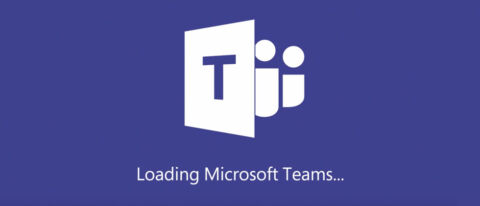Microsoft Teams is coming to Office 365 government cloud users starting July 17th. Here’s what govies need to know.
There is an old idea that “if you don’t solve a good problem, someone else will.”
This is the root cause of shadow IT and the bane of government IT administrators, constantly challenged to keep up with new technologies that enable their end users to “fix” what those users perceive as a problem.
“How do I share this document with the contractors?”
“How do I pull everyone in for a quick sync?”
“Why do I have to constantly repeat the objectives for this meeting?”
Any of those sound familiar?
Microsoft Teams Aims to Change How Government Collaborates
In the federal space, it’s often joked that Collaboration and Efficiency are just not what they’re designed for. But Microsoft Teams, aims to change that idea. Now when an agency IT admin enables teams, all of their end users will be able to easily access it via Office 365.
If you are thinking:
“But wait wait wait…. Isn’t Teams just Slack? Yeah, we looked at that, but we already have Skype. We don’t need another way to chat.”
That’s a great point, but it’s also incorrect.
Security issues with open source software aside, Teams does resemble Slack in some ways. But the biggest difference is Teams actually integrates with an agency’s entire Office 365 investment.
Imagine a world where you no longer need to have Skype, OneNote, SharePoint, OneDrive, PowerPoint, Excel, Word, and Yammer open in order to work productively. What if it was all organized in one window that allowed you to easily view all of that content in topic specific channels?
Well that future is here my friend and it has the potential to be a gamechanger.
How Teams Actually Supports Productivity in Government
But what if you are thinking:
“Okay fine, so it has a lot of fancy integrations. How does that actually help me as a federal employee?”
The answer of course will vary from agency to agency, but the two ways Teams can absolutely help everyone boils down to two things:
- Persistent Chat in Channels
- Tabs
Within the Teams App, users can create Teams for their business group. For example, maybe you have a “GIS Contractors Team,” “Branch Directors Team,” or “OCIO IT Admins Team.”
Within a Team there are Channels which simply house topic-based conversations. Think of this as a Skype chat of which you may already be familiar.
But what always happened when you added someone else to a Skype chat you had going? The new person can’t see what has happened previously. Also, don’t you hate when you’re having a conversation in a chat and someone starts a new subject to which you really want to respond but there’s another subject that you don’t want to be forgotten and lost in the mix.
100 percent of doctors agree, this is the leading cause of emails getting fractured and skype conversations becoming all too confusing.
Well with Teams that problem will be solved. Anyone who can view a Channel will be able to see every past conversation that has happened.
Want to talk about a different subject? You can start a new thread in the Channel to make sure lines don’t get crossed. Someone not being responsive? You can @mention them so they get an alert to view the conversation.
Tabs are where those integrations happen. Let’s say you’re a PM for a group of contractors and you want to have an easy way to view all of the SharePoint Sites they’re working on.
Well, that may be three or four sites and you’re probably going to want to have some conversations around each of those sites to check-in. Now, instead of having to keep those tabs open in your browser and have a separate Skype chat or email thread for each site, you will be able to create one Channel and add a Tab that pulls SharePoint into Teams, so you can do your reviews and have your follows ups all from one interface.
These are just a few ways Teams can assist in the federal space. The possibilities are endless depending on how your organizations wants to collaborate.
Potential Challenge: What to Use When
While the collaboration benefits outweigh the challenges, there are potential pitfalls of which agencies need to be aware. In the private sector, Teams has created some questions in the workplace around what to use when. For example, you might field some questions like:
“… So when do I use Skype?”
Easy. When you want to chat with someone outside of your “Team” use Skype. When you want to collaborate with someone inside your Team you can use the chat feature in teams.
“… So when do I email?”
Try to use Email for communications with external folks outside the organization. Or, for communications that are very complex or wouldn’t format well in a Skype or Teams chat box.
Potential Challenge: Dark Data
Another challenge government admins need to be aware of is that Teams, by design, makes it even easy for users to create and delete data in an Office 365 Group.
This means without a sound and proactive governance strategy, content sprawl and dark data can become issues. On the other hand, with a good governance strategy, this empowers users to collaborate more efficiently without having to involve IT whenever they want a collaborative workspace provisioned.
Teams is the Future
Teams will soon become as prevalent as Outlook among Office 365 users in both the private and public sector. Smart agencies will embrace and adopt it early. Smarter agencies will do with adoption strategies and governance solutions in place.
Curious to know more about Microsoft Teams? Check out what our experts have to say in this FREE on-demand webinar!

